Realtime Collaboration Map
DBF has recently released a Real Time Collaboration Map Platform where multiple users can upload the designs that have been generated using the DBF play tool. At the moment users can not start a project from this page. To start a new project please follow the instructions in how to import custom site boundaries.
For instructions on how to access the collaborative map platform please go to the Collab MAP section of this document.
Upload custom site boundaries for large sites using Rhino3D-grasshopper
Import Macro Sites
In order to import the 4 large macro sites to DBF, students can simply open a new project in Singapore, by typing Singapore in the search bar at the top of the dashboard page.
We have provided the individual sites in a folder called GeoJSON Macro Sites along with this guide. Alternatively, students can upload custom site boundaries for individual projects or mark up a site boundary in the map page.

To import these sites to DBF, log into your DBF account and search for Singapore.
This will take you to the map page where you can draw a site or upload a geojson of the site you would like to work on.If you want to use a geojson click on the upload button located on the left side of the wheel ribbon menu.

A pop up window will come up where you can simply drag and drop any geojson site boundary
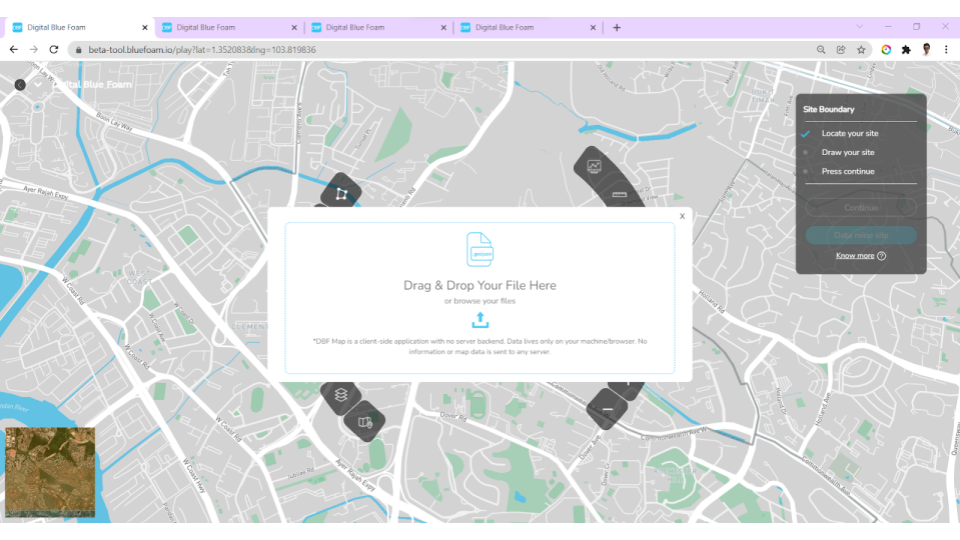
In this example I will select the file named plot0_Christine.geojson
DBF recognizes that you are trying to upload a site boundary. Click on the Site Boundary button and you should have your geolocated site.
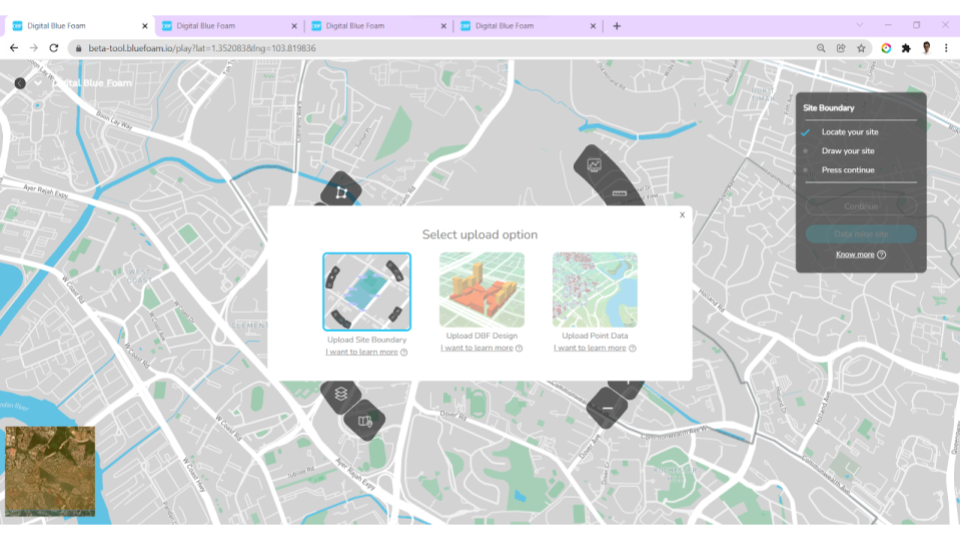
You should be able to see the Macro site that you just uploaded. If you want to start a project that encompasess this entire site simply click on Continue on the right side panel.
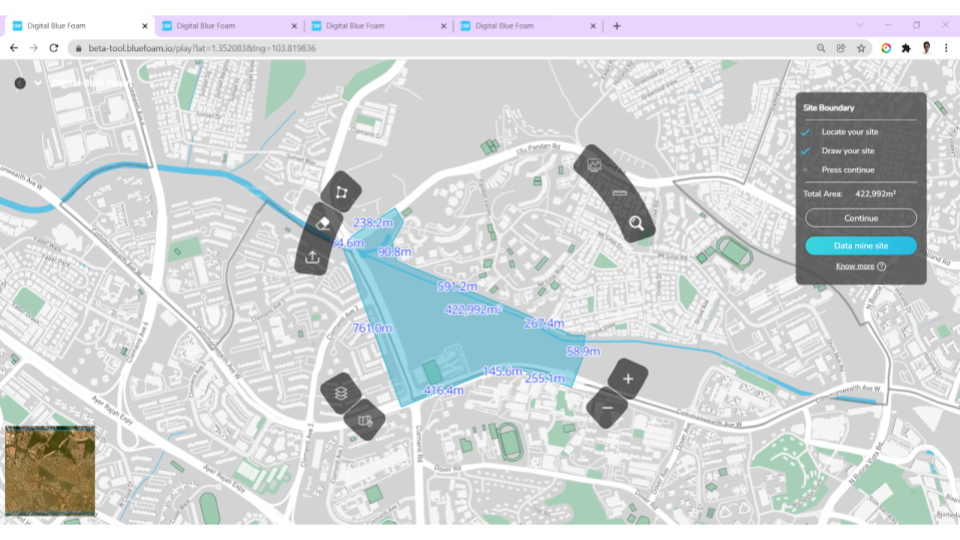
Once in the tool students can generate a large scale development of the entire Macro Site

Working on individual projects
Subdividing Macro site into smaller sites
Students can create their own internal subdivisions of the macro sites using rhino to split site into multiple individual sites.
We have prepared a rhino file with the 4 site boundaries that will be used in the class. This file is georeferenced to a metric projection scale. Please remember not to relocate the site to a different location in rhino or the coordinate system reference would get lost.
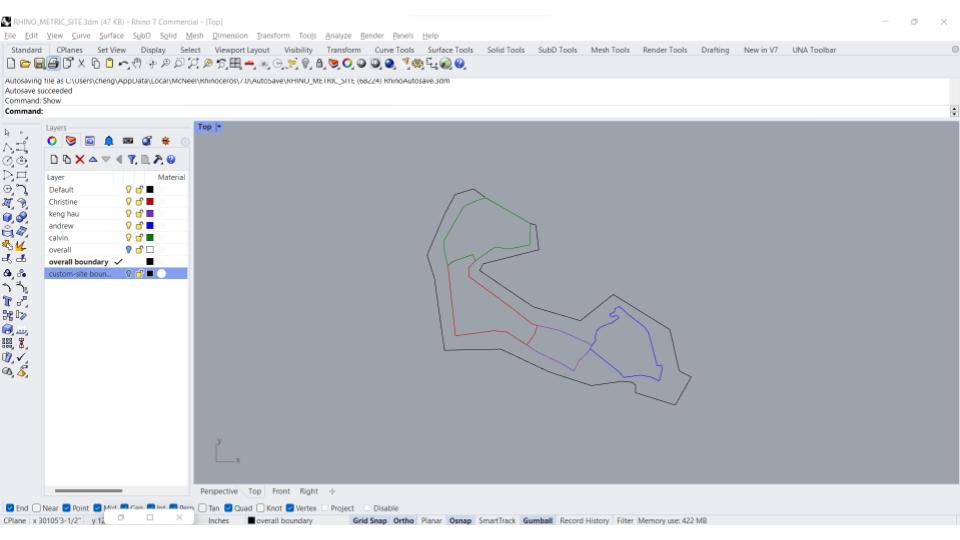
Draw your own sub-boundaries
In this file users can draw their own sub-boundaries as closed polylines using Rhino tools or Grasshopper. Remember that the sub-boundaries need to be closed polygons
.jpg)
Export custom sub-boundaries using Grasshopper
In order to run this grasshopper definition you first need to install Decoding Spaces Toolbox plugin
.jpg)
We have provided a Zip file that contains the Grasshopper Plugin. Once you install the plugin you should be able to open the Grasshopper file
.jpg)
Example
Using rhino or grasshopper generates some sample subplots. In this case we have generated some voronoi cells to illustrate the process of exporting the sub boundary sites.
.jpg)
Export sub boundaries as GeoJSON for DBF in 4 simple steps
.jpg)
- Step 01
Select the rhino geometry you want to export as geojson. (in this example we are using the voronoi cells ( Make sure they are closed polygons)
- Step 02
Select the path where you would like to save the Geojson e.g C:\User\Desktop\SUTD site export
- Step 03
Turn the toggle to True, so the file can be written.
- Step 04.
If you are working with multiple subplots and want to export them quickly, just move the slider.
Check the folder that you selected to save the files. You should see the exported sub-boudaries plots.
.jpg)
Import custom sub boundaries to DBF
Now you can use these sub boundaries as your working plot in DBF. Go to your DBF account and open the map page in Singapore
.jpg)
Once you are in the map select the upload option.
.jpg)
Drag and drop the custom subplot to start a new project with the subplots you just created.
.jpg)
.jpg)
Once the student has exported the sub boundary plot, they can use this boundary to create an individual project.
.jpg)
.jpg)
Real Time Collaboration Map
How to Access RTC Map
To access the Real Time Collaboration Map scroll down on the dashboard to the RTC section. Click on the DBF Map button. This will take you to a new page and give you access to the RTC map that you can share with other collaborators.
.jpg)
The Real Time Collaboration Map page has a slightly different UI. You will be asked to type in the city you are working on.
.jpg)
Once you type in Singapore a collaborator map project is created with a unique shareable link. In this map you and your collaborators can upload their individual designs and display them together in a common space.
.jpg)
How to share a link of this map with a collaborator?
.jpg)
Before you share!
Only registered users to DBF can access this sharable link. If you are sharing this link with someone that is not registered to DBF, this person will have to go through the registration process and get a valid account before they can access the collaborative map
Share link or send invitation
On the top right corner press the share button. Users can:
- Write the email of the person you want to share this map with
- Copy the URL
Don't forget to assign the collaborator permits ( Can View, Can Edit)
.jpg)
How to Visualize Design Solutions in the RTC MAP
Multiple users can upload their designs to the collaborative map project. To upload a design, you need to have a valid .Geojson, a geo-referenced model of your project.
You can download the .GeoJSON file of your project from the DBF design tool.
Download a geojson from DBF Tool
First Download a Geojson from DBF tool by clicking on download button and the geojson download option.
.jpg)
In your downloads you will find a .GeoJSON file
.jpg)
Upload to Real Time Collaboration Map
To upload this file to the collaborative map, go back to the map page and click on the upload button located on the left button side of the ribbon menu.
.jpg)
Drag and Drop GeoJSON
Simply drag and drop the file you would like to display in the map. The system will recognize if you are uploading a design solution, a network or point data.
.jpg)
Name your layer and confirm upload. Your design should be visible on the map. Similarly other users can upload their designs.
.jpg)
How to upload network
Once you have downloaded the custom network from the tool, you can download this network as a .GeoJSON file. Users can even create geo-referenced custom network in other softwares like QGIS or Rhino3D. To upload this network, click on the upload button, located on the wheel UI. Locate and select the desired .GeoJSON file
.jpg)
This .GeoJSON file is automatically detected as a Network layer. Click on the Upload button, once you have named your data layer.
.jpg)
Now, when you click on the data layers button on the wheel UI, you can see your uploaded network in the Layer Manager panel, under the Uploaded section. Click on this data layer to zoom in to the location of your network.
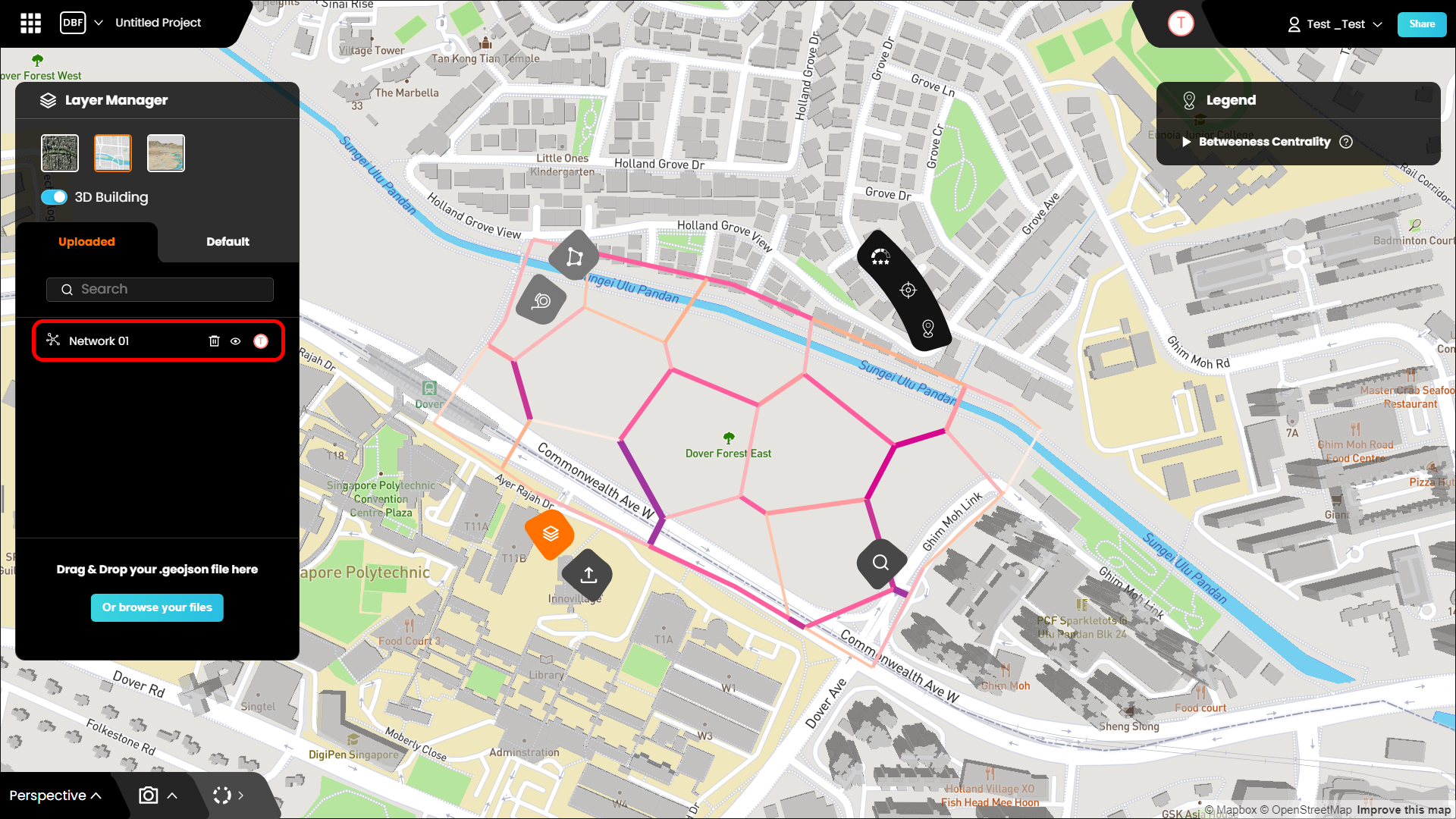
Click on the Between Centrality in the Legend panel located on the top right corner of the screen, to know more about the street network analysis done for your uploaded network file.
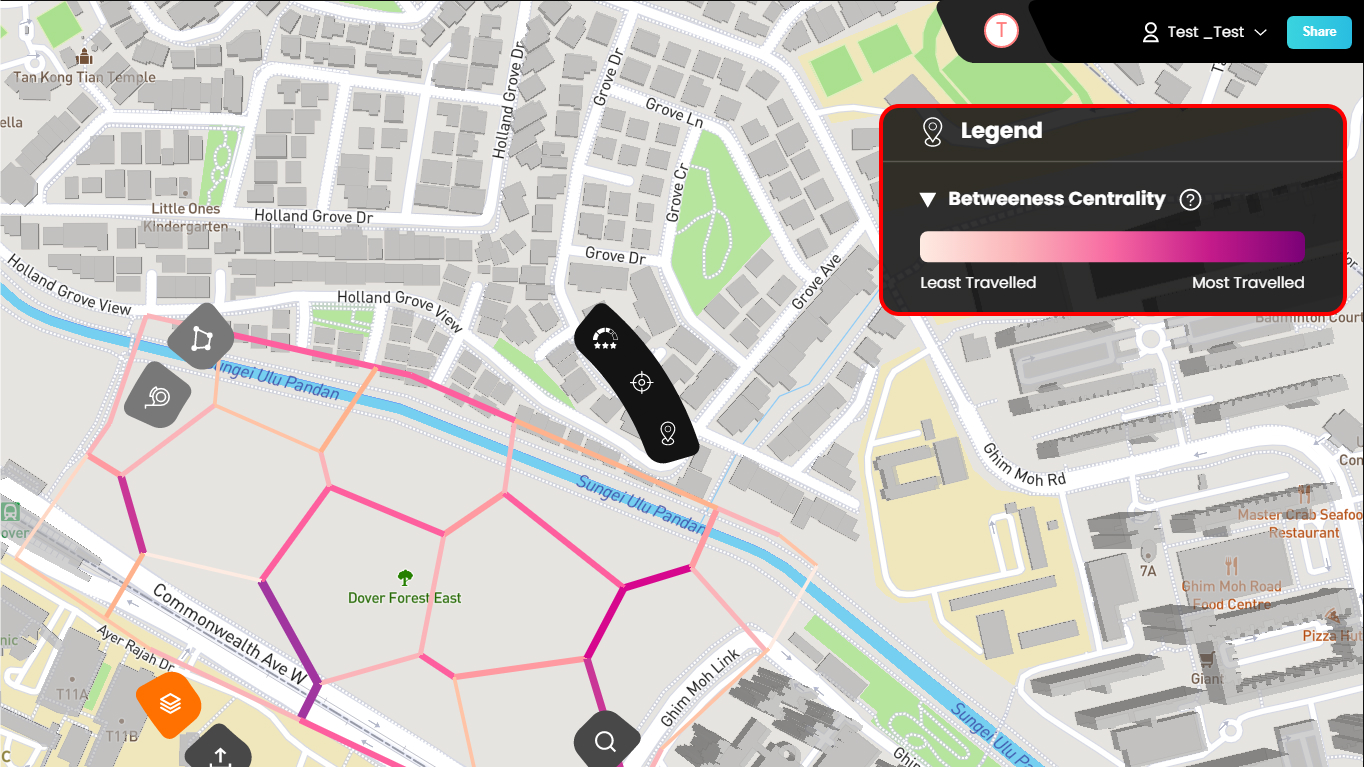
Hover over the ? icon to get information about this analysis.
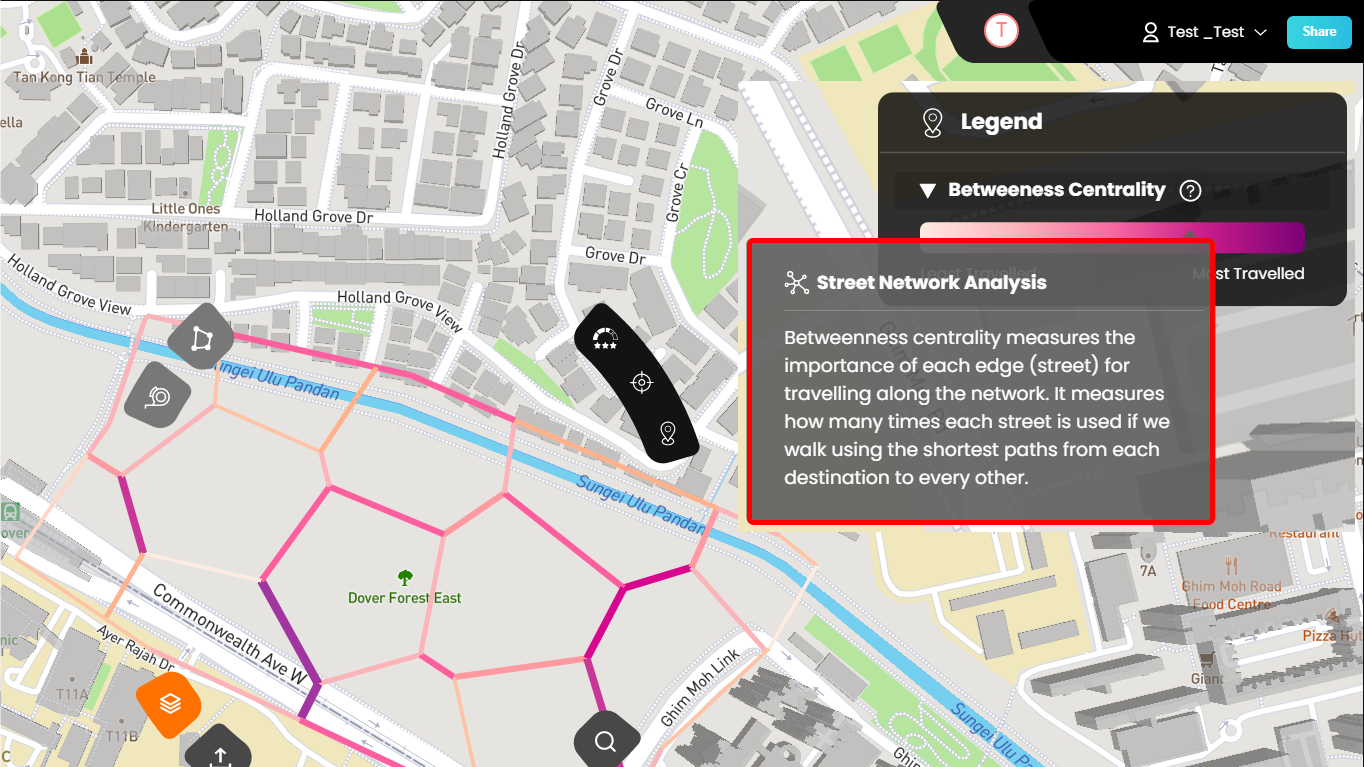
Create one map project for team or class
It is preferred that one team member (Professor / Admin) creates the map project and invites all the students to the same map project via email invitation.
Save the Map Project
The map page is under continuous development, so it is preferred that the user saves this map URL for future use. You can do the following things:
- Copy-Paste this URL somewhere
- Bookmark the tab in chrome
How to share the project
Map owners can invite other collaborators to the map by sending an invitation to their email address.
.jpg)
Create a public Map
Users can make the map public so that anyone with the link can access it to view or edit. Switch between Anyone with link or Only people invited and share the link at the button so that collaborators can access this map.
.jpg)